Crag Survival Handbook Review
“How are people not just dieing left and right?”
We were sipping coffee at a friend’s house in Las Vegas, catching up before we hit the road back to Colorado. We shared a few of the sketchy stories we had seen during our trip, and our friends expressed the above sentiment, saying it was a regular occurrence to see people trying to kill themselves at Red Rocks. And we all agreed it was most likely due to the fact that climbers are no longer introduced to the sport through mentors, but through climbing gyms, where no one is really showing them how to be safe once they head onto real rock.
In order for you to get an idea of where we were coming from, here are a few of the things we saw during our time there:
- A guy was showing his friend how to rappel after cleaning a sport route, and he mentioned that “you can use a back up for the rappel, but there is so much friction in the system it’s not a big deal if you let go.”
- A girl was trying to lead this route that has a reputation for being scary getting to the second bolt. She took a bad fall or two and the attempt ended in tears and frustration, with her partner on the ground yelling at her.
- We arrived at the base of a popular multipitch route to find a party ahead of us. We weren’t in a rush and figured we’d let them get a pitch ahead of us before starting up. While leading the second pitch, the leader stopped at a belay 50′ up, even though the pitch is supposed to be 150′ long. They then climbed the next pitch to the proper anchor, essentially adding a pitch to the route, and slowing things down even more.
- A guy lead up a climb that traverses fairly far to the left at the top, and he was trailing two ropes, but he only clipped one of them into the pro, so his other second was looking at a wild, swinging fall should he come off. The climbing was not easy for them.
- And then the icing on the cake. Tracy arrived at a shared belay and watched in horror as the person next to her, who was belaying her second up, struggling with double ropes, simply took her second off belay in order to sort out the mess! Tracy grabbed the rope, put a kleimheist on it and attached it to her harness, so at least if the guy fell, he wouldn’t die. She then walked this person through some basics, which didn’t include an analysis of her anchor, which was basically a daisy chain clipped into various things. Whew!
Before gyms were popular, you often got into the sport by falling in with someone who was more experienced. They would show you how things worked, how to be safe and usually keep you from killing yourself in those formative years. These days, it’s easy to get introduced to climbing by going to the gym with your friends. In short time, you can get decently strong and think you are ready to climb outside, when in fact there are so many other skills that come into play once you leave the air conditioned safety of the gym.
It’s to address this need that Matt Samet wrote the Crag Survival Handbook, and after reading through it, I think this book should become mandatory reading for anyone getting into climbing these days. Gyms should give it to everyone who takes a class, guide services should do the same. We may even work into the climbing curriculum of the school where I work.
It covers an incredible range of topics, from safety hazards to gear care to crag etiquette, in what amounts to years worth of amassed knowledge. Even if you’ve been climbing for awhile, you’ll likely pick up some new tips and tricks you didn’t have before. The chapter on movement alone is worth the price of the book, with tips from the likes of Justen Sjong, Kevin Jorgeson, Beth Rodden and Jonathan Siegrist. And this isn’t just for people new to the sport, with sections on redpointing strategies and how to set up a top rope solo system with Mini Traxions. Further, sidebars such as “Do Cams Work in Wet Rock”, “Skin Taping Tips,” and “Hold Cleaning 101” give practical tips for a wide range of topics that even experienced climbers may not know the how or why of.
Let’s look back at what we encountered at the crags, and see if it’s addressed in this book:
The folks who stopped at the wrong belay anchor could have avoided that mistake by better reading the route topo and/or MountainProject description (p.37).
The girl looking at a potentially bad fall on a route she wasn’t comfortable on could have better evaluated it before hand (p.220).
The woman who took her partner off and the guy who didn’t know that he should protect both of his seconds should have “ground schooled everything” (p.36) to make sure they knew what they were doing before they left the ground.
Hmm, maybe this book CAN make a difference!
Now don’t get me wrong, I love climbing gyms! I’ve driven three hours just to climb in a gym all weekend. But given that they are now serving as the entry point for many (most?) new climbers to the sport, the need for good mentors has never been greater. And while the old way may still be the best, it seems unrealistic in today’s environment, but hopefully resources like the Crag Survival Handbook can go a long way to putting folks on the path to becoming safe, responsible and knowledgeable members of the climbing community.
UPDATE 4/4: The folks at the Mountaineers Books have said they will happily send a free copy to your climbing gym or organization, hit us up through the contact form (bottom of page) for more info.
Retail is 19.95. You can get more information, download a sample chapter or order your copy on the Mountaineers Books website.
Disclaimer: In the spirit of full disclosure, this book was provided to SplitterChoss.com for the purpose of reviewing. Don’t worry, though, our integrity can’t be bought!
4 Responses to Crag Survival Handbook Review
Bulldog Creek Dog Walk (IV WI 4+)
Hayden Carpenter and Tom Bohanon recently repeated an obscure ice climb on the south side of Mt Sopris. Given a brief mention in Jack Robert’s ice guide, Bulldog Creek Walk is described as being 100 meters of WI 4. What they found was seven pitches of ice in a remote setting that makes for one […]
Connect with Us





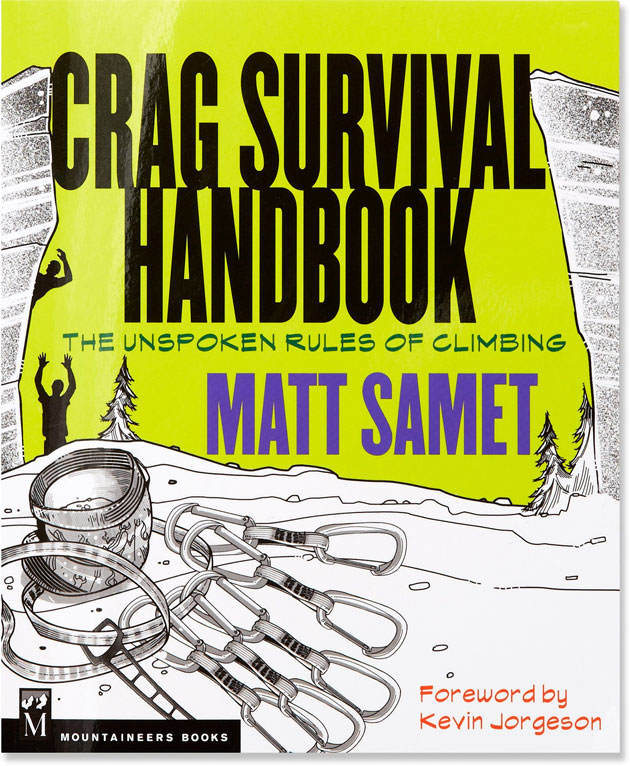



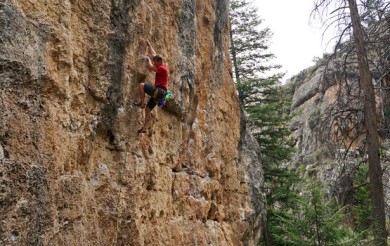
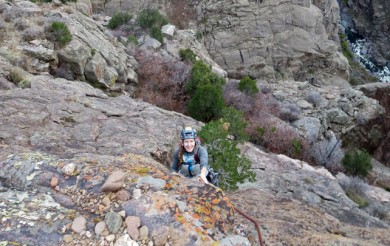
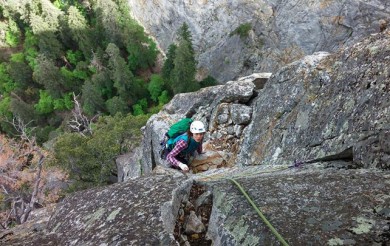
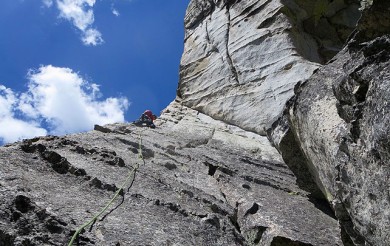



The book sounds awesome, I think I’ll have to look into it.
I feel like your Disclaimer at the bottom of this post should say: “Disclaimer: The author of this post is far from perfect and probably did lots of stupid stuff himself throughout his climbing career. Except taking his second off belay, that is terrible.”
Ha, thanks Kate! That actually gives me a good idea for a post, all the stupid things I did (and survived) as a young climber. Though I was actually fortunate enough to have a mentor that really hit the safety thing hard. For several years when I first started, I refused to set up a top rope anchor off less than tree stout trees. Ah, the ignorance of youth!
Yeah, the whole “how best to start climbing outdoors” thing is a funny issue. I mean, I totally agree that there are lots of people (possibly gym rats) who go out and do stupid, dangerous stuff. It’s horrifying. But if you listen to interviews with old climbing legends, plenty of them had a handful of young, dumb friends, and maybe some old railroad spikes to hammer in as pitons. They read “Annapurna” or “Basic Rockcraft” and just got after it. When I started I never had a mentor, but I was older, maybe a little more cautious, and started obsessively reading everything I could find about technique, anchors, etc. Anyway, I’m sure this is a good book and lots of folks need the help, I just think that the old adage “In the old days everyone had a mentor and learned about safety” ain’t quite right.
Good point Jay, I might be painting with too broad a brush. I guess what I’m trying to get at is that many more people these days are getting into outdoor climbing without any kind of guidance, which was less common ten or twenty years ago. Also, there are more potential repercussions to all of us as a result of a less knowledgeable climbing user group, in terms of impact to the land, more accidents, more access issues, etc.